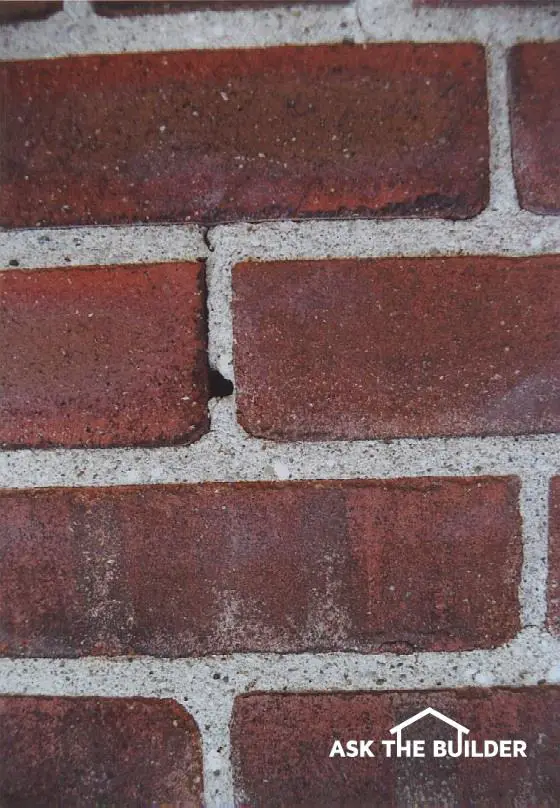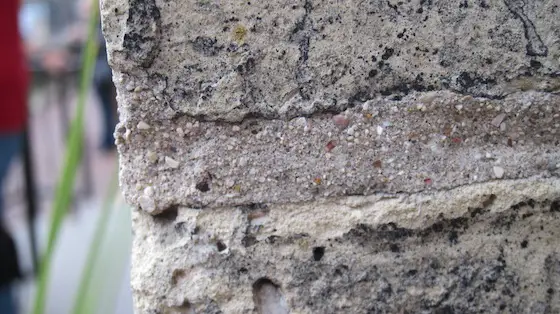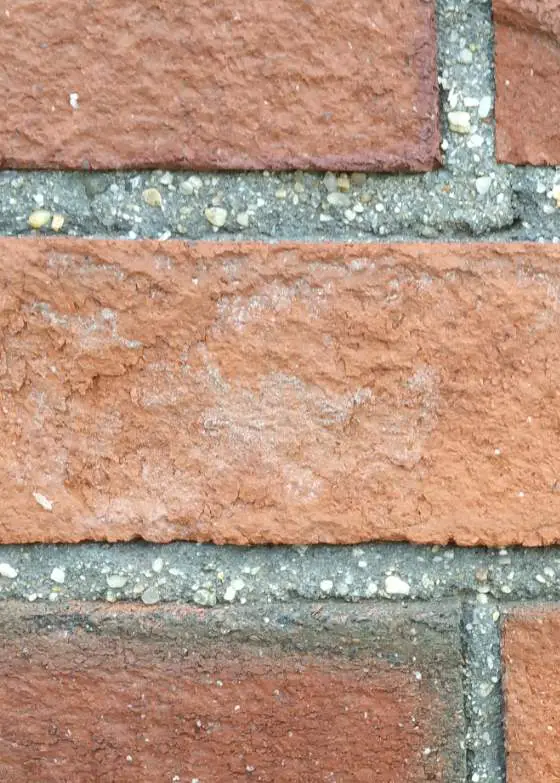Matching Mortar

Matching Mortar | The color of the grains of sand makes a huge difference in mortar color once the actual cement paste wears away.
Matching Mortar Tips
DEAR TIM: The mortar between my brick needs to be repaired. I want the patchwork to blend as closely as possible with the existing mortar. Should I use regular pre-mixed mortars that I see on construction sites? What is the best way to assure a color match? Kate, Sarasota, FL
DEAR KATE: Matching mortar color and texture requires patience and persistence. Detective work combined with a little experimentation will yield excellent results. The key to success lies in taking your time. Do not rush into this task.
Believe it or not, the key to a successful color and texture match lies in matching the sand used when mixing the mortar. The sand in mortar accounts for well over 70 percent of the matrix that you see. Brand new brick joints often have a film of lime or cement produced by tooling the joint. This very thin film is eroded with time. Water, wind and pollution constantly work to expose the sand that was used to create the mortar. Take a close look at an older brick wall and you will see what I mean.
How to Determine the Color and Size of the Sand?
To determine the color and particle size of the sand used in your mortar you must do a little destructive work. Try to obtain a cubic inch of mortar from several of your brick joints which require repair. Use a piece of wood to gently grind the mortar pieces into a coarse dust. Avoid the use of a hammer. You do not want to pulverize any of the sand particles. Mix 1 ounce of muriatic acid with 10 ounces of water. Stir in your mortar dust. Within 2 days any and all lime or cement in the mix will have dissolved. The sand will be at the bottom of the container. Use white vinegar instead of acid if your mortar contains crushed sea shells. Do not add water to the vinegar. Use straight from the bottle.
Carefully pour off a majority of the acid bath into a toilet or laundry tub. Be careful not to loose any sand. Add water to your container to dilute the remaining acid. Pour the sand and water mixture slowly into several folded paper towels to capture the sand. Allow the sand to dry. Store it in a closed, clear glass jar.
Where Can I Find Dry Sand Samples?
Visit several gravel and sand pits until you find a sand that matches yours in color and particle size. Be sure to look at dry sand samples! Moisture changes the color of sand. If your house is older, try to ask old bricklayers where sand was purchased and/or mined in your area. Trust me, the older the house, the closer the source of sand. Once you have found a sand or a blend that is close in color and texture, you are ready for further experimentation.

You can clearly see the individual pieces of colored sand in the mortar. Remember, sand particles are just tiny pieces of actual rock. See the white, black, orange, pink and buff pieces of sand? Photo credit: Tim Carter

You can clearly see the colored sand grains in this high-resolution photo. Note how the mortar in this photo is a much darker gray than the white brick photo above. Photo credit: Richard K.
Older mortars often had a much greater amount of lime content than today's pre-mixed mortars. You need to locate a building supply house that sells lime, white cement and grey cement. You will need all three components. Old mortar (70 years older or more ) may require 6 measures of lime to one measure of cement. Lighter mortars probably require the use of white cement instead of grey cement. You may find that you have to blend both cements to get a perfect color match.
Need to repair your masonry? Find a good contractor and learn the secrets of the trade with my Masonry Repair (Chimneys, Stucco & Brickwork) Contractor Hiring Guide and Checklist. I offer a 100% Money Back Guarantee.
Furthermore, if your brick and mortar are old and dirty, you may want to wash the brick before you begin the repair job. If this is not feasible, you may have to age or stain the repair job after it dries to make it appear dirty. The trick to matching color while you are mixing is to get the existing mortar wet. If the wet mixture in your wheelbarrow looks close or identical to the wet old mortar in between the brick, you may have a perfect match when it dries. Do a test batch and let it dry for two weeks to see if your recipe is right. If not, keep trying.
If you are building a new home, save 2 or 3 five gallon buckets of the sand used to mix your mortar. In addition, save a bag of mortar if possible. Wrap and tape it tightly with 2 or 3 plastic garbage bags to seal out water vapor. This pack rat mentality will come in handy if a storm damages your chimney or someone bumps a wall with a car.
Referenced in the September 2, 2016 AsktheBuilder Newsletter.
Column 170
7 Responses to Matching Mortar